#Heliophysics
Explore tagged Tumblr posts
Text
Plasma clouds over the surface of the Sun
466 notes
·
View notes
Text
Science Science-Fiction Movies
Not all scientists are physicists! Here are some movies that highlight different fields of study
All fully recommended, some of my personal favorites
Geomorphology and Geophysics: The Core
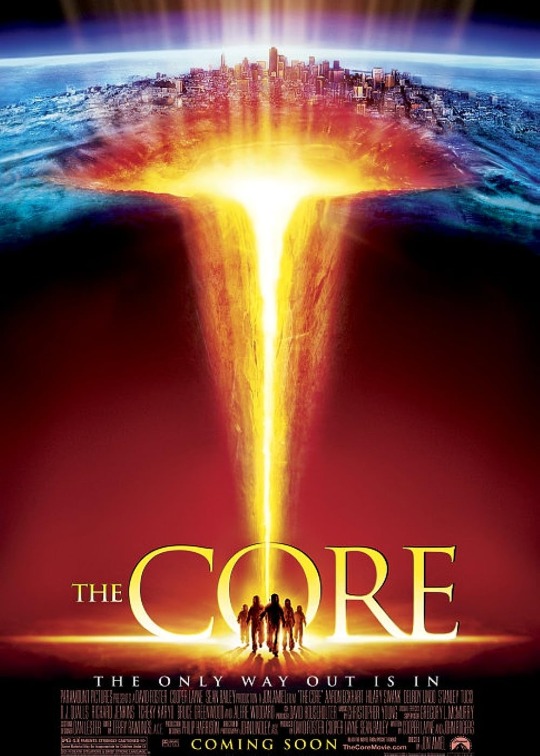
Geomorphology: the scientific study of the physical and chemical processes that impact how surface of a planet changes. For example, a fluvial geomorphologist is a scientist that studies how rivers (fluvial) change the surface of a planet. Not always Earth, some geomorphologist study planets like Mars and Mercury. Earth science is more than just geology and rocks! Sometimes it also about rocks moving around or being eroded 🌏
Meteorology: Twister and Twisters


Meteorology: the study of a planet’s atmosphere with a strong focus on forecasting the weather 🌪️
Linguistics: The Arrival

Linguistics: the scientific study of languages 🖋️
Seismology: Tremors

Seismology: the scientific study of earthquakes 🪇���
Heliophysics and Solar Physics: Sunshine
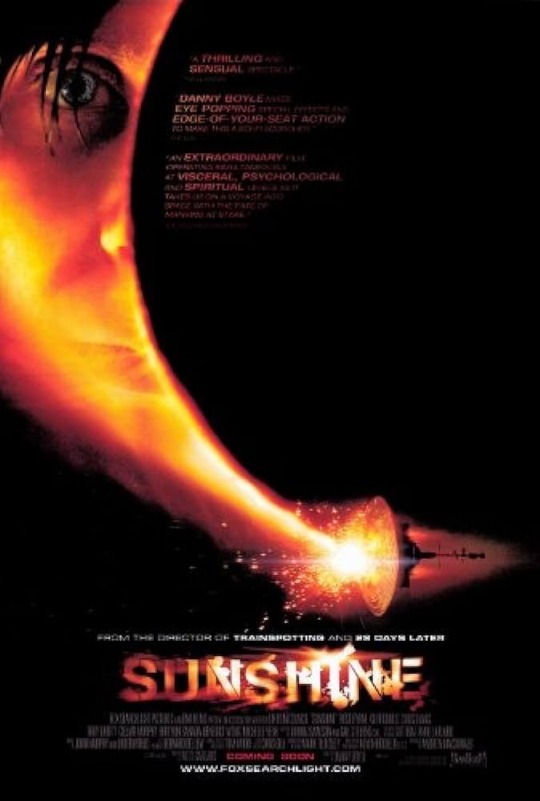
Heliophysics: the scientific study of the sun and its effects on the solar system ☀️
Paleontology: Jurassic Park

Paleontology: the scientific study of life on earth through the fossil record 🦴 🦕
Botany and Astrophysics: The Martian

This one is a bit of a mix. The book makes uses of a lot of astrophysics, but the character is a botanist
Astrophysics: the scientific study of physical and chemical processes of the cosmos (a newer field of astronomy that includes more of a focus on physics) 🛰️
Botany: the scientific study of plants 🌱
Genetics and Astronomy: Gattaca

Another mix! The main theme of the movie revolves around genetics and genetic engineering (specifically eugenics). However, the main character is an astronomer/astronaut
Genetics: a branch of biology that concerns the scientific study of genes, genetic variation, and heredity 🧬
Astronomy: the study of space, stars, planets, and other celestial objects 🪐
#the core#twister#twisters#arrival#tremors#sunshine#movie recommendation#science fiction#science fiction movies#geomorphology#geophysics#meteorology#linguistics#Seismology#heliophysics#botany#the martian#jurassic park#paleontology#gattaca#genetics#astronomy
17 notes
·
View notes
Text
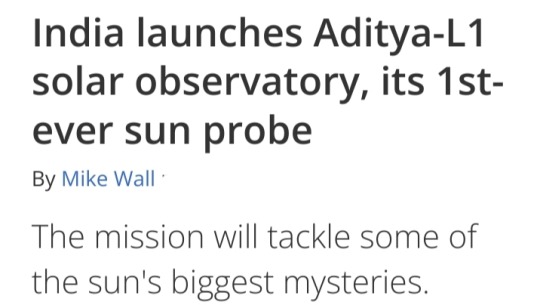
2 September 2022
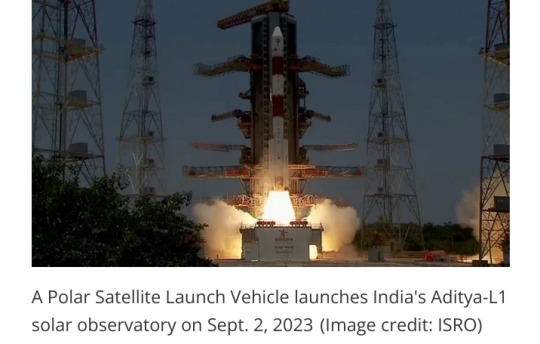
Fresh off its success at the moon, India is now headed for the sun.
The nation launched its first-ever solar observatory today (Sept. 2), sending the Aditya-L1 probe skyward atop a Polar Satellite Launch Vehicle (PSLV) from Satish Dhawan Space Centre at 2:20 a.m. EDT (0620 GMT; 11:50 a.m. local India time).
The PSLV deployed Aditya-L1 into low Earth orbit (LEO) as planned about 63 minutes after liftoff, sparking applause and high fives in mission control.
"Congratulations, India, and congratulations, ISRO [the Indian Space Research Organisation]," Jitendra Singh, India's Minister of State for Science and Technology, said shortly after deployment on ISRO's launch webcast.
"While the whole world watched this with bated breath, it is indeed a sunshine moment for India," Singh added.
The successful launch followed on the heels of another big milestone for India: On August 23, its Chandrayaan-3 mission became the first to land softly near the moon's south pole.
Chandrayaan-3's lander-rover duo are expected to conk out in a week or so, when the harsh lunar night falls at their touchdown site. But Aditya-L1's long journey has just begun.
A long road to a good sun-viewing spot
Aditya-L1 won't stay in LEO forever:
After a series of checkouts, it will use its onboard propulsion system to head toward Earth-sun Lagrange Point 1 (L1), a gravitationally stable spot about 1 million miles (1.5 million kilometers) from our planet in the direction of the sun.
That destination explains the latter part of the mission's name. And the first part is simple enough: "Aditya" translates to "sun" in Sanskrit.
The 3,260-pound (1,480 kilograms) observatory will arrive at L1 about four months from now, if all goes according to plan.
But the long trek will be worth it, according to the ISRO.
"A satellite placed in the halo orbit around the L1 point has the major advantage of continuously viewing the sun without any occultation/eclipses," ISRO officials wrote in an Aditya-L1 mission description.
"This will provide a greater advantage of observing the solar activities and its effect on space weather in real time."
Indeed, another sun-studying spacecraft is already at L1 — the Solar and Heliospheric Observatory (SOHO), a joint NASA-European Space Agency mission that launched in December 1995.
(Several other spacecraft, including NASA's James Webb Space Telescope, are at Earth-sun Lagrange Point 2, which is a million miles from Earth, in the direction away from the sun.)

Solar flares, the coronal heating mystery and more
Once it's settled in at L1, the solar probe will use four three science instruments to study the particles and magnetic fields in its immediate surroundings and four others to scrutinize the sun's surface (known as the photosphere) and its atmosphere.
This work will help scientists better understand solar activity, including the dynamics of solar flares and coronal mass ejections (CMEs), ISRO officials say.
Flares are powerful flashes of high-energy radiation, and CMEs are huge eruptions of solar plasma.
Both types of outburst can affect us here on Earth. Intense CMEs that hit our planet, for example, trigger geomagnetic storms that can disrupt satellite navigation and power grids.
(As a side benefit, such storms also supercharge the gorgeous light shows known as auroras.)
Aditya-L1 will also tackle the "coronal heating problem," one of the biggest mysteries in heliophysics.
The corona — the sun's wispy outer atmosphere — is incredibly hot, reaching temperatures around 2 million degrees Fahrenheit (1.1 million degrees Celsius), according to NASA.
That's about 200 times hotter than the solar surface, which is "only" 10,000 degrees F (5,500 degrees C) or so.
It's still unclear what is responsible for this startling and counterintuitive discrepancy.
(Why would it be hotter away from the sun's core, where the energy-producing nuclear fusion reactions are occurring?)
Aditya-L1 has other science goals as well. For instance, the mission also aims to more fully flesh out the solar wind, the stream of charged particles flowing constantly from the sun, ISRO officials said.
Aditya-L1 will measure the composition of the solar wind and attempt to determine how it is accelerated.
And Aditya-L1 will do all this work on the cheap:
The mission's price tag is about 3.8 billion rupees, or $46 million US at current exchange rates.
That's in the same ballpark as Chandrayaan-3
India's first successful moon-landing mission costs about 6.15 billion rupees, or $74 million US.
For comparison, NASA's most recent big-ticket sun mission, the record-setting Parker Solar Probe, costs roughly $1.5 billion.
This disparity should not be viewed as an indictment of NASA, however; labor costs are much higher in the United States than in India, among other differences between the two nations' economies.
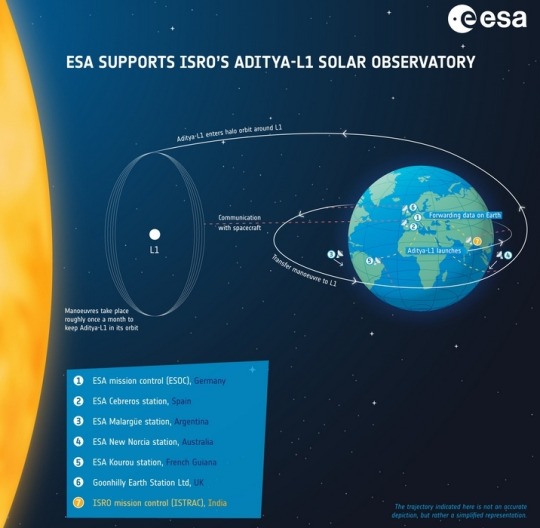
Aditya-L1 is a coronagraphy spacecraft to study the solar atmosphere, designed and developed by the Indian Space Research Organisation (ISRO) and various other Indian research institutes.
#India#Aditya-L1#Polar Satellite Launch Vehicle (PSLV)#Satish Dhawan Space Centre#low Earth orbit (LEO)#sun#Indian Space Research Organisation#Chandrayaan-3#Earth-sun Lagrange Point 1 (L1)#Solar and Heliospheric Observatory (SOHO)#solar flares#coronal mass ejections (CMEs)#coronal heating problem#heliophysics#solar wind#Parker Solar Probe#NASA#solar observatory#solar atmosphere
13 notes
·
View notes
Text

I didn't take my professional camera equipment bc I wanted to experience the moment but I'm delighted by this quick shot I managed to capture in central Ohio with the night vision mode on my camera. You can barely see Venus on the lower right and Jupiter on the upper left as well as the beautiful corona
#my photo#sun#astrophotography#solar eclipse#solar eclipse 2024#planets#amateur astronomy#heliophysics#do you love the color of the sky#ohio
6 notes
·
View notes
Text


- Wednesday, May 3, 2023 -
The Spring 23 semester has officially come to a close, and now that I have no homework I'm literally sitting at my desk like

T minus 19 days until the start of my heliophysics REU at UAH, I need to get myself some clothes asap lol
I recently received the title of my project and learned that I'll be working on simulating active regions of the sun which I think is SUPER cool. I can't wait to get started!! I'm thinking I'll definitely be more active on the daily while I'm in Alabama for that. I want to keep a decent blog of that both for sharing and for myself to keep record of this incredible experience.
I think that's all for now, stay safe ❤️
images above: pen on my arm reading "fuck it, we bawl" with a teardrop smiley underneath, and a basic leaf latte art I somehow managed at work recently.
#college#study blog#studyblr#studying#stem students#uni#college student#study aesthetic#study with me#latte#latte art#fuck it we ball#end of the semester#summer#heliophysics#astrophysics major
11 notes
·
View notes
Text
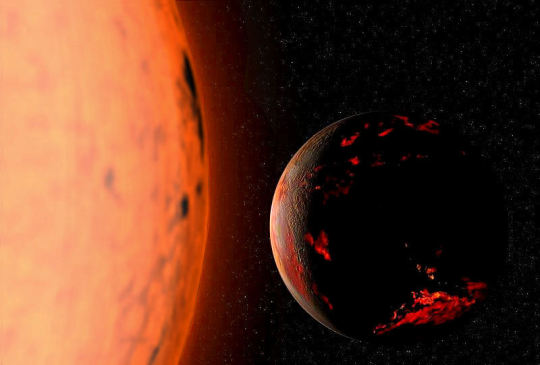
“In about one billion years, the solar luminosity will be 10% higher, causing the atmosphere to become a ‘moist greenhouse’, resulting in a runaway evaporation of the oceans. As a likely consequence, plate tectonics and the entire carbon cycle will end. Following this event, in about 2–3 billion years, the planet's magnetic dynamo may cease, causing the magnetosphere to decay and leading to an accelerated loss of volatiles from the outer atmosphere. Four billion years from now, the increase in Earth's surface temperature will cause a runaway greenhouse effect, creating conditions more extreme than present-day Venus and heating Earth's surface enough to melt it. By that point, all life on Earth will be extinct. Finally, the most probable fate of the planet is absorption by the Sun in about 7.5 billion years, after the star has entered the red giant phase and expanded beyond the planet's current orbit.”
Wikipedia contributors, "Future of Earth" (Sep 11, 2023).
#extinction#solar luminosity#stellar evolution#solar evolution#red giant phase#heliophysics#astronomy#indexmiscellany
2 notes
·
View notes
Video
NASA’s NuSTAR Telescope Reveals Hidden Light Shows on the Sun by NASA's Marshall Space Flight Center Via Flickr: Even on a sunny day, human eyes can’t see all the light our nearest star gives off. A new image displays some of this hidden light, including the high-energy X-rays emitted by the hottest material in the Sun’s atmosphere, as observed by NASA’s Nuclear Spectroscopic Telescope Array (NuSTAR). While the observatory typically studies objects outside our solar system – like massive black holes and collapsed stars – it has also provided astronomers with insights about our Sun. In this composite image, NuSTAR data is represented as blue and is overlaid with observations by the X-ray Telescope (XRT) on the Japanese Aerospace Exploration Agency’s Hinode mission, represented as green, and the Atmospheric Imaging Assembly (AIA) on NASA’s Solar Dynamics Observatory (SDO), represented as red. NuSTAR’s relatively small field of view means it can’t see the entire Sun from its position in Earth orbit, so the observatory’s view of the Sun is actually a mosaic of 25 images, taken in June 2022. The high-energy X-rays observed by NuSTAR appear at only a few locations in the Sun’s atmosphere. By contrast, Hinode’s XRT detects low-energy X-rays, and SDO’s AIA detects ultraviolet light – wavelengths that are emitted across the entire face of the Sun. Image Credit: NASA/JPL-Caltech/JAXA #nasa #marshallspaceflightcenter #msfc #heliophysics #sun #space #solar #observation #star #astronomy #science #hinode #SDO #SolarDynamicsObservatory #NuSTAR Read More More about NuSTAR More about Solar Dynamics Observatory More about Hinode NASA Media Usage Guidelines
#NASA#NASA's#Marshall#Space#Flight#Center#Heliophysics#Sun#Hinode#NuSTAR#SDO#Solar Dynamics Observatory#Goddard Space Flight Center#GSFC#flickr
3 notes
·
View notes
Text

Our active sun as captured by NASA's Nuclear Spectroscopic Telescope Array (NuSTAR), Japan's Hinode spacecraft and NASA's Solar Dynamics Observatory (SDO).
2 notes
·
View notes
Text
@nasa heliophysics communications team doing great work here 🌈


Above image is a pride flag with every color band represented by a NASA image. White is Earth clouds, pink is aurora, blue is the Sun in a specific wavelength, brown is Jupiter clouds, black is the Hubble deep field, red is the top of sprites, orange is a Mars crater, yellow is the surface of Io, green is a lake with algae, blue is Neptune, and purple is the Crab Nebula in a specific wavelength.
#pride#nasa#rachel lense#heliophysics#astronomy#science#happy pride 🌈#pride month#lgbt pride#lgbtqia
131K notes
·
View notes
Link
A timelapse of the Twin Rockets to Investigate Cusp Electrodynamics (TRICE-2) mission launching ...
#originaltags#goddard space flight center#heliophysics#heliophysics division#nasa centers & facilities#science & research
0 notes
Link
Welcome to another episode of Astronomy AstroDailyPod. I'm your host, Steve Dunkley, and today is 15 July 2024. Despite feeling under the weather, I'm here to bring you the latest updates from the cosmos. Let's dive straight into the celestial news with Hallie. Episode Highlights
Understanding the HeliosphereThe sun's influence extends far beyond Earth, creating the heliosphere—a vast bubble in space filled with solar wind and magnetic fields. This episode explores the heliosphere's interaction with the interstellar medium and its encompassing planets and celestial belts.
Webb Telescope's Cosmic Dance To celebrate its second anniversary, the Webb Telescope captured an infrared view of two galaxies, the penguin and the egg, locked in a cosmic dance. This segment delves into their interactions and the star formations triggered by their collision.Night Sky Wonders
Discover the celestial events visible this week, including Mars and Jupiter's pre-dawn appearance in Taurus, the close encounter with Uranus, and the start of the Perseid meteor shower. Tips for stargazing and using binoculars to enhance your experience are also shared.
Space Junk Dangers Farmers in Saskatchewan recently found spacecraft fragments, highlighting the growing issue of space debris. This segment discusses the risks and the need for controlled reentries to prevent potential fatalities or damage.
SpaceX Falcon 9 Failure SpaceX's Falcon 9 rocket faced a rare failure, leading to the loss of 20 Starlink satellites. This section covers the incident, its implications, and the ongoing investigation by the Federal Aviation Administration.
Don't forget to visit our website at astronomydaily.io to subscribe to our newsletter and stay updated with the latest space news. Follow us on X at AstroDailyPod and join our community on Facebook.
For a special deal from our sponsor, Malwarebytes, visit www.bitesz.com/malwarebytes for 50% off. This offer is for a limited time, so don't miss out!
Until next time, keep looking up and stay curious about the universe. See you next week when I'm hopefully feeling better. Bye for now!
www.bitesz.com
#and#astrodailypod#astronomy#coronal#dunkling#egg#ejections#galaxies#heliopause#heliophysicists#heliophysics#hubble#mass#penguin#solar#space#steve#telescope#webb#wind
0 notes
Text
Huge tornados of plasma on the Sun
14 notes
·
View notes
Text
10 Years of the Sun in 6 Minutes ☀️
Observations of the Sun from June 2, 2010 to June 1, 2020 with 425 million high-definition images taken every 0.75 seconds

It is a bit hypnotic.
4 notes
·
View notes
Text
I know the point of this post is to be poignant, but the saying is still kinda true.
Now, most stars that we see being dead already? Yeah, that’s bullshit. However, a decent chunk of the stars we see are likely already dead.
The longest lasting stars also happen to be the faintest, meaning that a lot of the farther away stars that we see don’t live as long. Now, “don’t live as long” still means billions of years (except for O-type stars), but there’s still a good chunk that have died.
It’s a bit easier to understand when you recognize the fact that we have observed the corpses of stars (white dwarfs, neutron stars, black holes). Stars die all the time.
And by that logic, some stars have died recently enough (relatively speaking) that the last of their light hasn’t reached us yet. It’s kind of an equilibrium thing at this point. Stars are being made, stars are burning, and stars are dying at all times right now.
So yeah, while it is true a decent amount of the stars we see are still kicking (some quite violently), implying there’s a good chance no stars that we see have already died just kinda isn’t right.
You still won’t be able to tell the difference though. The only way we know what’s going on with another star is by the light they give us. And that takes time to reach us. Dead or alive, to us they shine all the same.
i learned a while ago that the whole "most of the stars we see in the sky are actually already dead because they're so far away that we're seeing them as they were thousands of years ago" thing is a myth because stars live so long that it's unlikely many, if any, of them have burned out yet, but i'm still glad that myth exists because there's just something about the thought of the sky as a graveyard of stars that gets to me
75K notes
·
View notes
Text
Editors of EarthSky - Auroras last night wowed millions! Pics here:
Aurora #SpaceWeather #GeomagneticStorm #Geomagnetism #CoronalMassEjection #CME #XFlare #Heliophysics #Physics #Photography
#aurora#spaceweather#geomagneticstorm#geomagnetism#coronalmassejection#cme#xflare#heliophysics#physics#photography
1 note
·
View note
Text
With last night's extreme geomagnetic storm, (the last time we had one this strong was on Halloween in 2003!) there may still be aurora tonight visible in many places (but unfortunately probably less than last night).
For anyone interested in forecasting websites, https://www.solarham.com/ has reports and lots of data collected together, where you can see sunspots and flare activity along with aurora forecasts (or just look at some pretty pictures of the sun in different wavelengths).
ESA's space weather network, https://swe.ssa.esa.int/, has some more technical maps, and also their solar wind forecast, which is pretty cool (I think NOAA has one too).
As we reach solar maximum, there may be more strong magnetic storms (this one certainly seems like there will be more than the previous solar maximum) and possibly more chances to look for the aurora!
#aurora borealis#Heliophysics#Ooh so much data for me I love solar storms#I mean not if they cause large scale blackouts but fingers crossed that's not the case#geophysics
0 notes